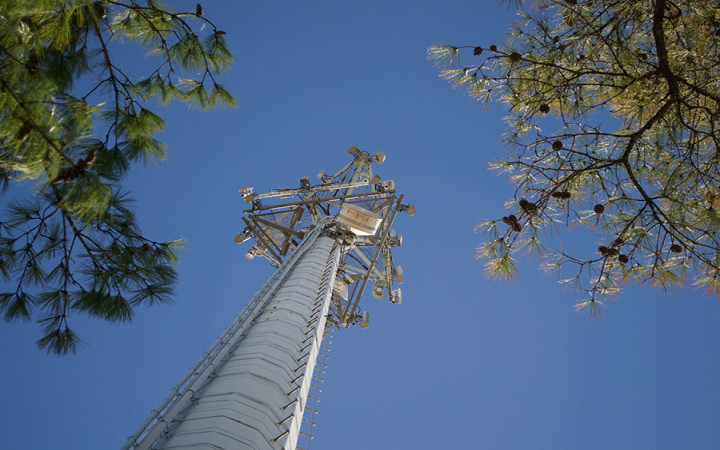Today’s Wonder of the Day was inspired by Keegan. Keegan Wonders, “How do cell towers work?” Thanks for WONDERing with us, Keegan!
We were walking through the Wonderopolis woods the other day when we overheard an interesting conversation between a squirrel and a groundhog:
Groundhog: Hey Squirrel! What are you looking at?
Squirrel: Have you seen this huge new tree? It's so weird!
Groundhog: Wow! It's tall and shiny. But where are its leaves?
Squirrel: It doesn't have leaves! It also doesn't seem to have any fruit.
Groundhog: What's that stuff up there then?
Squirrel: I don't know. I climbed up and nibbled on it, but it shocked me. Look at my tail!
Groundhog: Isn't your tail always bushy?
Squirrel: Not that bushy!
We didn't have time to listen to their whole conversation, but we did notice the "tree" they were talking about. As it turns out, it wasn't a tree at all. It was a cell phone tower!
In our modern world where everyone seems to have a cell phone, it's no surprise that more and more cell towers are popping up everywhere you look. Their primary job is to elevate the antennas that receive and transmit radio-frequency (RF) signals from cell phones.
Wires connect the elevated antennas to transceivers, signal amplifiers, and other equipment usually located at ground level in sealed cabinets. Most cell towers will be used by multiple cellular providers who provide coverage in the areas surrounding the cell tower. For example, if you see three triangular platforms near the top of a cell tower, that's a good indication it's being used by three different wireless carriers.
Cell towers can be standalone structures made of steel poles and lattice frames. They can also be attached to other tall structures, including buildings, bridges, street lights, water towers, and billboards.
Standalone cell towers can range from 50 to 300 or more feet in height. The tallest towers, known as macrocell towers, offer a range of 10 miles or more in rural settings.
Smaller towers, called microcells, are often used in urban or suburban environments where the coverage zone is a mile or less. Tiny picocell towers cover about 250 yards and can be used in airports, office buildings, or business centers.
Cell tower antennas receive the RF signals sent out by cell phones. Depending upon usage in the area, cell towers might handle a few dozen to thousands of cell phones at once. The antennas transmit information to and from your phone to the computerized equipment at the base of the tower.
Your cell phone stays in touch with the nearest tower. As you travel, your phone may be transferred from one cell tower to another over and over again. This usually happens without any interruption of service. However, from time to time it's possible that a call may be dropped if signal strength is weak or you travel into an area without adequate coverage.




